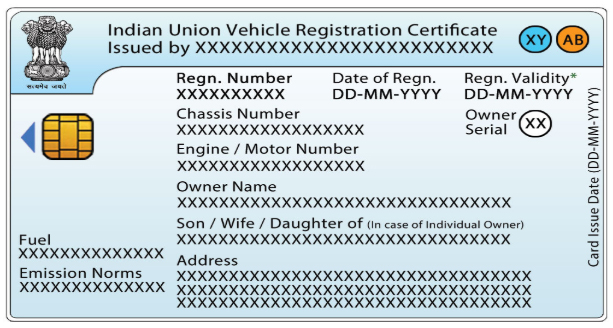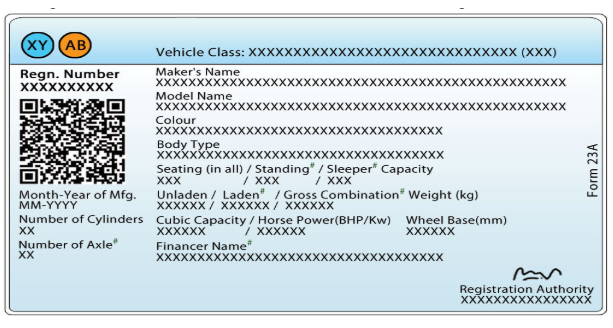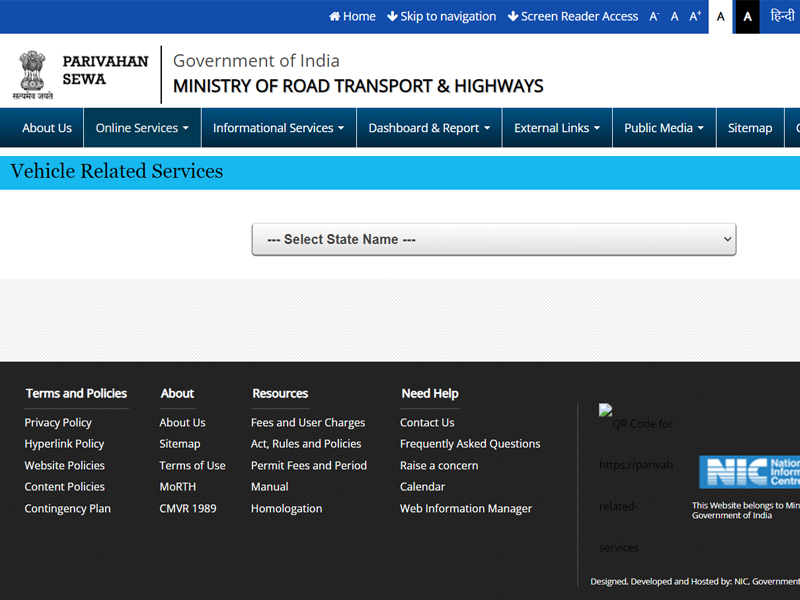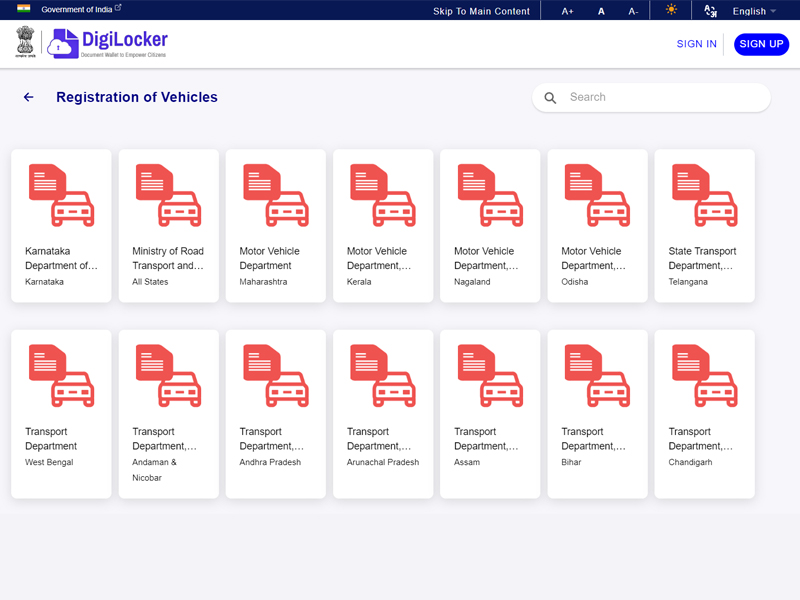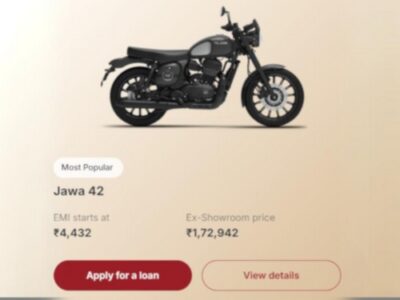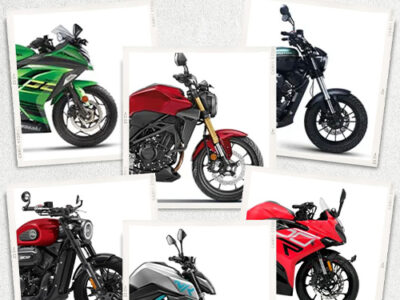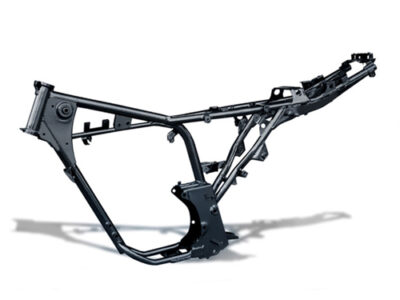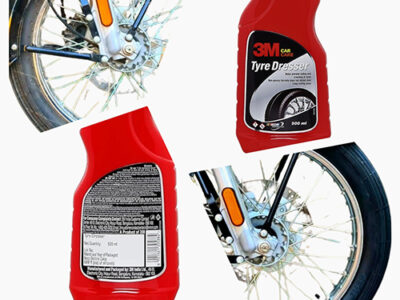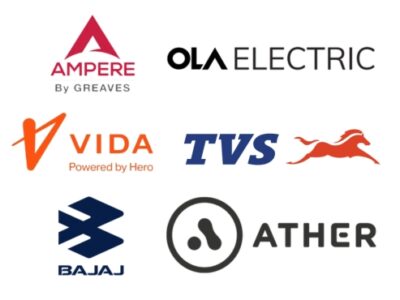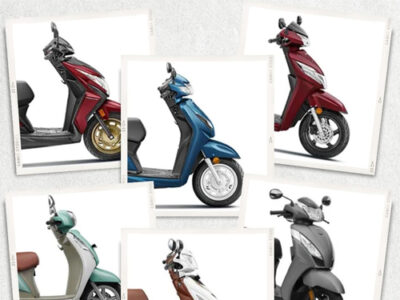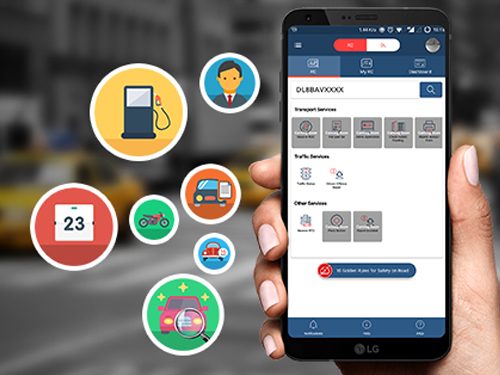
|
Getting your Trinity Audio player ready...
|
Long story short: It is Time to delve deep into motorcycle Registration Certificate (RC) / Two-wheeler/ bike RC Book in India, discussing the traditional book format with the digital versions of Digilocker and Mparivahan. Gain a thorough understanding of the things to know, things to take care of, FAQs and considerations for managing your Two-wheeler RC book effectively in today’s digital age.
Key Takeaways
- The RC (Registration Certificate) book for a motorcycle is a legal document issued by India’s Regional Transport Office (RTO).
- The two-wheeler RC book includes vital motorcycle and owner details such as registration number, engine and chassis numbers, dates, manufacturer, vehicle type, owner’s information, fuel type, model, engine capacity, seating capacity, color, and wheelbase.
- The Motorcycle RC book is crucial for legal compliance, proof of ownership, insurance claims, financing, resale, and traffic compliance, with the digital RC now available through platforms like DigiLocker and mParivahan for enhanced convenience.
- A Digital RC is an electronic version of the traditional RC book, accessible via platforms like DigiLocker or mParivahan, offering convenience, safety, eco-friendliness, and easier updates.
- To upload, download the app, create an account, and fetch the RC using your registration number. The digital RC is legally recognized for traffic inspections across India.
Introduction
Gone are the days when you could ride a motorcycle without valid documents for your vehicle on the road. Regular inspections by various authorities and awareness of the process of obtaining a driving license among motorcycle owners have improved understanding and knowledge among owners.
Many think they can evade checking, but the real issue comes when we get involved in issues like accidents, state border checking, etc., where you can get heavy fines and other consequences. Also, when there is bike theft in your area, for example, and you must prove your ownership to the inspection officials, you must submit official documents. Otherwise, you are under the official’s radar.
To avoid such situations, you must keep various documents, either hard or soft copies, while travelling. But here, our discussion is confined to the two wheeler RC book. We will now discuss in depth all about the RC book doubts and its finer details right here. So, let’s start from scratch.
What is a Motorcycle RC Book?
The RC (Registration Certificate) book for a motorcycle is a legal document issued by India’s Regional Transport Office (RTO). It proves the bike has been registered with the authorities per Section 39 of the Motor Vehicles Act 1988. According to this act, every bike owner must have a registration certificate to drive the bike legally on public roads.
What information does the two wheeler RC book contain?
The Bike RC book includes several vital details about the motorcycle, its owner, and the owner’s address:
- Registration Number: Unique identifier for the bike.
- Engine Number: A specific number assigned to the motorcycle’s engine.
- Chassis Number: Unique number etched onto the motorcycle’s frame.
- Registration Date: Date of motorcycle registration.
- Registered Upto: Date of validity of the motorcycle registration.
- Registered: Place of RTO registration of the motorcycle.
- Manufacturer: The name of the company manufacturer.
- Type of Vehicle: Classification of the bike (e.g., scooter, cruiser).
- Name: Name of the motorcycle owner.
- Address: Address of the motorcycle owner.
- Fuel Type: Type of fuel used.
- Model Name: Model name of the motorcycle.
- Engine Capacity: The displacement of the engine in cc.
- Seating Capacity: Number of people the bike can legally carry.
- Vehicle Color: The color of the bike.
- Wheelbase: The distance between the points where the front and rear wheels touch the ground.
What is the importance of the Motorcycle RC book?
1. Legal requirement
The bike RC book is a mandatory document for all motorcycle owners in India. Riding without a valid RC is an offence and can attract hefty penalties. It is the primary document checked by traffic authorities during routine inspections.
2. Proof of ownership
The Bike RC book serves as an indisputable proof of ownership. It is a crucial document during the sale or purchase of a motorcycle, as it needs to be transferred to the new owner’s name, ensuring a transparent chain of ownership.
3. Insurance & claims
In the unfortunate event of an accident or theft, the bike RC book is required to process insurance claims. Insurance companies must verify the motorcycle’s ownership and details before proceeding with claims or issuing a new policy.
4. Financing & resale
The RC book is vital for processing the loan application for those seeking to finance their motorcycle purchase with a loan. When selling a motorcycle, the RC book helps establish the legitimacy of the vehicle and its history, thereby aiding in a smoother resale process.
5. Traffic compliance
The bike RC book contains information about the motorcycle’s compliance with emission standards and other regulations. Traffic authorities use this information to ensure the vehicle adheres to environmental and safety norms.
The Digital RC in India: A New Chapter
In this technological and AI age where convenience and ease are king, the Indian government introduced the Digital India campaign, aiming to digitise and simplify government services. The transport sector embraced this initiative, leading to the creation of the digital RC, or e-RC. This electronic format of the traditional RC book is accessible through platforms like the government’s DigiLocker or the mParivahan website. The digital RC is a step towards modernising how vehicle documentation is handled in India.
What is a Digital RC in India?
A Digital RC is an electronic version of the traditional bike RC book. It is accessible through platforms like the government’s DigiLocker or the mParivahan website.
What are the benefits of a Digital RC in India?
1. Convenience
The digital RC eliminates needing a physical copy of the RC book. Stored securely on your smartphone, it is accessible anytime, anywhere.
2. Safety & Security
Digital documents reduce the risk of loss, theft, or damage. They are stored in secure cloud environments, making them easily retrievable.
3. Eco-Friendly
The shift to digital reduces the need for paper, contributing to environmental conservation efforts.
4. Easy Transfer & Updates
Transferring ownership or updating details in the digital RC is more streamlined than the traditional process, often involving less paperwork and shorter processing times.
How to Upload RC in DigiLocker & mParivahan?
To upload your RC in DigiLocker or mParivahan, follow these steps:
- Download the App: Install DigiLocker or mParivahan from your app store.
- Create an Account: Sign up using your mobile number and authenticate with an OTP.
- Link Aadhaar (Optional): Link your Aadhaar card for additional services.
- Fetch Documents: Search for your bike RC book using your vehicle’s registration number and add it to your digital locker.
How do you obtain a Digital RC in India?
Motorcycle owners must ensure their vehicle is registered and have a valid RC book to access the digital RC. They can then follow these steps:
- Download the App: Install the DigiLocker or mParivahan android app or ios app on your smartphone.
- Create an Account: Sign up using your mobile number and authenticate with an OTP.
- Link Aadhaar (Optional): You can link your Aadhaar card for additional services and ease of document retrieval.
- Fetch Documents: Search for your RC book using your vehicle’s registration number and add it to your digital locker.
How do you use a Digital RC in India?
Once the digital RC is added to your DigiLocker or mParivahan app, you can present it during traffic inspections. The digital RC is legally recognised and accepted by all traffic authorities across India.
FAQ related to Motorcycle RC book and Digital RC in India
1. How can you transfer bike ownership online?
1. Obtain a No Objection Certificate (NOC)
Before initiating the online transfer process, you must obtain a No Objection Certificate (NOC) from the Regional Transport Office (RTO) where the bike is registered. This certificate is essential for transferring ownership, mainly if the motorcycle is sold to someone in a different state.
2. Visit the Parivahan Website
The Parivahan website, India’s official portal for vehicle-related services, facilitates the online transfer process.
3. Fill Out the Required Forms
Form 29: This form is required for the transfer of ownership. It includes details about the seller and the buyer.
Form 30: This form is also necessary for the transfer of ownership within the same state.
4. Submit the Necessary Documents
You will need to upload the following documents:
- Original Registration Certificate (RC)
- NOC from the RTO
- Valid bike insurance certificate
- Pollution Under Control (PUC) certificate
- Address and identity proof of the new owner
- Passport-size photographs of both the buyer and the seller
- PAN card details of the new owner.
5. Make the Payment
Pay the relevant fee for the transfer of ownership. The cost for transferring bike ownership within the state is typically between ₹30 to ₹35, while a smart card fee of ₹200 must be paid to the RTO.
6. Verification and Approval
The RTO will verify the submitted documents and process the application. Once the application is approved, the RTO will issue a new registration certificate in the new owner’s name.
7. Check the Status of the Transfer
You can check the status of the bike RC book transfer online through the Parivahan website or via SMS by sending a message to 7738299899.
2. How can you transfer a bike within the same state?
Transferring the bike registration certificate within the same state is straightforward and can be completed online through the Parivahan website. The required documents and forms are the same as mentioned above.
3. How can you transfer your bike to another state?
To transfer the bike registration certificate from one state to another, additional documents, such as the
- Receipt for road taxes from the new state
- Copies of the NCR and NOC certificates
- Form 28
The process and fees may vary depending on the states involved.
4. What is the time required to transfer the bike?
The total time required for the RC transfer of a bike can vary depending on the state’s RTO and the specifics of the RC transfer. In India, the entire process might take a week to three to four weeks.
5. How to Obtain and Find a Two-wheeler RC Book Online
1. Using the Vahan e-Service Portal
Steps to Download RC from the Vahan e-Service Portal:
- Visit the Vahan e-Service Webpage: Go to Vahan e-Service.
- Navigate to Online Services: Click the “Online Services” tab and select “Vehicle-Related Services” from the menu.
- Select Your State: Choose the state from the drop-down menu where the registration certificate was issued.
- Login/Register: Register on the website if you are a new user. Existing users can log in using their credentials.
- Enter Vehicle Details: Provide your vehicle’s registration number and select the appropriate State RTO from the menu.
- Download RC: Go to the ‘Download document’ tab and click the ‘RC print’ option.
- OTP Verification: You will receive an OTP on your registered mobile number. Enter the OTP to download your vehicle’s RC in PDF format.
2. Using Digilocker
Steps to Download RC from Digilocker:
- Visit the Digilocker Website or App: Go to Digilocker or download the Digilocker Android app or ios app.
- Create/Sign In to Your Account: If you do not have a Digilocker account, create one using your Aadhaar card. If you already have an account, sign in using your Aadhaar card/mobile number and security PIN.
- Navigate to Issued Documents: On the home page, go to the ‘Issued documents’ tab and scroll down to the ‘Get more issued documents’ option.
- Select Ministry of Road and Transport: Choose the ‘Ministry of Road and Transport’ and click the ‘Registration of Vehicles’ tab.
- Enter Vehicle Details: Fill in your vehicle’s registration and chassis numbers, then submit.
- Download RC: After submitting, click the ‘Get Document’ option to download your RC in PDF format.
6. How to obtain a Duplicate RC?
Steps to Obtain a Duplicate RC:
- Report to Police: Report the loss or destruction of the RC to the local police station and obtain a police certificate.
- Visit Parivahan Website: Go to the Parivahan Website.
- Select Duplicate RC Option: Choose the “Duplicate RC” option and provide accurate details about your vehicle and personal information.
- Upload Required Documents: Submit the necessary documents, including Form 26, police certificate, PUC certificate, valid insurance certificate, proof of address, and other required documents.
- Pay the Fee: Pay the prescribed fee using online payment options.
- Submit application: Submit the application electronically and track the status using the provided application number or acknowledgement receipt.
7. What Documents do you require for a Duplicate motorcycle RC book?
- Application in Form 26
- Police certificate
- Pollution under control certificate
- Valid insurance certificate
- Proof of address
- Challan clearance from traffic police & Enforcement Wing Transport Department in commercial vehicles
- Tax clearance from the Accounts Department in commercial vehicles
- Attested copy of PAN Card or Form 60 & Form 61 (as applicable)
- Chassis & Engine Pencil Print
- Signature Identification of the owner
- The affidavit states that RC is lost and has not been impounded.
8. How do you renew a two wheeler RC book online?
Using the Parivahan Sewa Portal
- Visit the Parivahan Sewa Portal: Go to the official website at Parivahan Sewa.
- Select Online Services: Navigate to the ‘Online Services’ menu and click ‘Vehicle-Related Services.’
- Choose Your State: Select your residential state from the drop-down menu.
- Select Nearest RTO: Choose the nearest Regional Transport Office (RTO) and click ‘Proceed.’
- Select RC-Related Services: From the list of services, select ‘RC-related Services’ and then choose ‘Renewal of Registration.’
- Enter Vehicle Details: In the designated fields, provide your vehicle’s registration and chassis numbers and click ‘Verify Details.’
- Pay Road Tax: If there are any pending road taxes, follow the steps to pay them online.
- Generate OTP: An OTP will be sent to your registered mobile number. Enter the OTP to proceed.
- Submit Application: Verify the details and submit the application. Make the payment for the renewal fee online.
- Download and Print Forms: Download and print the necessary forms after payment. Sign them where required
- Visit RTO for Verification: Visit the RTO with the printed documents for verification and vehicle inspection.
9. What documents do we require to renew the two wheeler RC book?
To renew the RC book, you will need the following documents:
- Original Registration Certificate
- Form 25 (Duly filled and signed)
- Vehicle insurance certificate
- Pollution Under Control (PUC) certificate
- Copy of PAN card or Form 60 or Form 61 (whichever is applicable)
- Pencil print of vehicle’s engine and chassis number
- Fitness Certificate (FC)
- Proof of road tax payment
- Vehicle owner’s signature identification
- Address proof
- Identity proof
10. How do you check the two wheeler RC book status?
To check the status of your RC application:
- Visit the Parivahan Sewa Website: Go to the official website.
- Log In: Register or log in using your email address and mobile number.
- Select Status: Click on ‘Status’ from the main menu and choose ‘Know Your Application Status.’
- Enter Application Number: Enter your application number and click ‘Submit’ to view the status.
11. What do you do if you lose your motorcycle RC book?
1. File a Police Complaint
The first step is to report the loss or theft of your RC book to the nearest police station. Filing a First Information Report (FIR) is mandatory and proves the loss when applying for a duplicate RC.
2. Gather Required Documents
You must collect several documents to support your application for a duplicate RC. These include:
- Form 26: This is the application form for a duplicate RC.
- Copy of the FIR: Proof of the police complaint.
- Affidavit: A sworn statement on stamp paper detailing the loss and confirming that the RC has not been impounded.
- Vehicle Insurance Certificate: Proof of valid insurance.
- Pollution Under Control (PUC) Certificate: Proof that the vehicle meets emission standards.
- Proof of Address and Identity: Documents such as an Aadhaar card, passport, voter ID, PAN card, etc.
- Engine and Chassis Number Pencil Print: A physical imprint of the vehicle’s engine and chassis numbers.
- Passport-size Photographs: Recent photographs of the vehicle owner.
- No Objection Certificate (NOC): If the two-wheeler is under a loan, a NOC from the financier is required.
12. How do you change the details on your motorcycle RC book?
To change the details on your vehicle’s RC, visit the Vahan Citizen Services, the official website of the Ministry of Road Transport and Highways. Please note that not all motorcycle RC changes can be made online. So check that first and do what is necessary.
13. How to Surrender Your Vehicle’s RC?
To surrender your vehicle’s RC, visit the Vahan Citizen Services, the official website of the Ministry of Road Transport and Highways. Surrendering of vehicle, RC is done when the original owner of the motor vehicle wishes to sell it; the RTO issues a notice as Form 37 to intimate that the original Registration Certificate needs to be surrendered for cancellation so the new financier can be issued a fresh Registration Certificate.
14. What is the Validity of Two wheeler RC Book?
The RC book is valid for 15 years from the date of issue. After this period, according to the Central Motor Vehicle Rules, it needs to be reregistered every five years upon payment of a ‘Green Tax’ if the agency deems it roadworthy.
15. Can I convert my Old RC book to a Smart Card online?
There is no direct online process for converting an old RC book to a smart card. Unlike the process for obtaining a duplicate RC, which can be done online in many states, converting an old RC book to a smart card requires a visit to the Regional Transport Office (RTO)
Offline Application Process for Bike RC Book in India
- Visit the Nearest RTO: You must visit the nearest RTO where your vehicle is registered physically.
- Submit an Application: Write an application to the Superintendent of Traffic Police explaining the need to convert your RC book to a smart card.
- Required Documents: Gather and submit the following documents:
1. Original RC Book
2. Pollution Under Control (PUC) Certificate
3. Insurance Certificate
4. Proof of Identity and Address
5. Required Fees - Processing Time: The processing time for receiving the smart card RC can vary. Typically, it takes 2-3 weeks but can sometimes extend up to 45 days.
- Tracking and Delivery: Once the application is processed, the smart card RC is usually sent via Speed Post to the applicant’s home address. Some RTOs provide tracking services through SMS or online portals.
16. Do Traffic Authorities accept the Digital RC?
Yes, all traffic authorities across India recognise and accept digital RC. Electronic records available on DigiLocker or mParivahan are legally at par with the original documents as per the Information Technology Act of 2000 provisions.
17. What are the penalties for Not Carrying the Motorcycle RC Book While Riding in India?
There are indeed specific penalties for not carrying your motorcycle RC book while riding in India:
- Legal Requirement: The Motor Vehicles Act mandates carrying the vehicle’s RC while riding. It serves as proof of registration and is essential for legal compliance on Indian roads.
- Penalty Amount: If caught riding without a valid RC, you can face hefty fines. The penalty can be as high as Rs. 5,000. For a vehicle without an RC book, there’s a specific fine of Rs. 2,000.
- Additional Consequences: Riding an unregistered bike or failing to produce a valid RC during a traffic stop can attract not only fines but also other penalties.
- Digital Alternatives: It’s important to note that digital versions of the RC stored in apps like DigiLocker or mParivahan are legally accepted. Suppose you have your RC stored digitally in these apps. In that case, you’re not required to carry the physical document, which can help avoid penalties if stopped by traffic authorities.
- Mparivahan official website
- Digilocker Official website
- Mparivahan Android App
- Mparivahan IOS App
- Digilocker Android App
- Digilocker IOS App
- Things to know while buying second hand motorcycle
- The dos and don’ts of bike modification & traffic rules in India
- How to finance your dream bike with a motorcycle loan
- Motorcycle service – All things you need to know explained
- KTM
Important official links for Bike RC book related Services in India
Other related articles for Two Wheeler RC
Conclusion
We hope this article covers all basic concepts, doubts, and FAQs related to motorcycle RC books. If you have any other doubts or queries about the two-wheeler RC book, email us at bikeleague2017@gmail.com. We are always eager to help and assist you. Also, here are several social media platforms of Bikeleague India to raise your suspicions.

